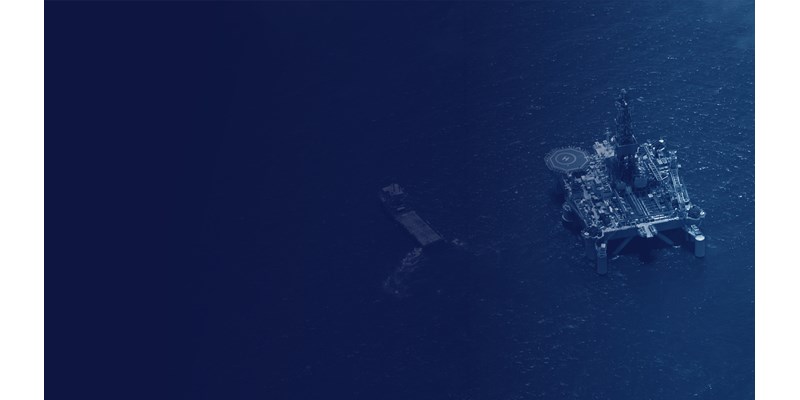1 minute read
Mhairidh Evans
VP, Global Head of CCUS Research

Mhairidh Evans
VP, Global Head of CCUS Research
Mhairidh leads our global research on carbon capture, utilisation and storage (CCUS).
Latest articles by Mhairidh
-
Opinion
Can CCUS help achieve Net Zero?
-
Opinion
Can CCUS momentum overcome headwinds to the industry?
-
Opinion
Carbon management frequently asked questions part 3: CCUS
-
Opinion
The challenges and opportunities in Europe’s oil & gas, CCUS and hydrogen sectors
-
Opinion
Our top five takeaway messages from the CCUS conference 2023
-
Opinion
The UK’s journey to net zero: an uncertain path ahead
The next 12 months will be pivotal for the upstream supply chain. Service companies will have to make tough calls on their future direction as they fight to remain investable in an unloved sector.
This article is an introduction to the report Upstream supply chain: 4 things to look for in 2021. Fill in the form to read our full analysis and predictions for the year ahead.
Big strategy shifts will take hold in the service sector
Many top-tier service companies are mimicking their operator clients, making the switch from oilfield services to energy services: Baker Hughes is repositioning itself as an ‘energy technology company’, Aker Solutions merged with Kvaerner to focus on low-carbon solutions, while KBR is moving out of energy altogether.
There’s no one-size-fits-all approach as upstream companies plan their route to resilience. It could be spinning off pure-play divisions to attract capital investors, carving out a niche as smaller, differentiated upstream businesses alongside broader offerings, or trusting in the oil market’s long-term fundamentals and doubling down on their upstream offerings.
Which routes to resilience will take precedence in 2021? Read the full report to find out more.
Backlogs will not be saved by a big pick-up in activity
Coronavirus restrictions curtailed global offshore activity in the first half of 2020. The lingering backlog will continue to cause headaches for operators and the supply chain – even as supply chains ease.
Half the floating platforms under construction announced delays in 2020, ranging from three to 12 months. Many are still moving targets, meaning there could be a further domino effect through the supply chain.
Suppliers are looking to 2021 for a pick-up in new business, but will this materialise? We don’t believe a material lift in new business volume for the supply chain is likely, although there are positive signs in deepwater with relatively advantaged projects. We do expect more diversity in the project mix, with demand spread across a greater number of projects and operators – meaning there should be more opportunities for suppliers to pick up market share.
Subsea tree awards are a good proxy for future offshore activity, as the starting point for all deepwater projects. What are our forecasts for such awards in 2021? And what’s our view on broader upstream spending? Find out more in the full report.
Supplier risks will increase
The sector’s financial health will continue to be tested in 2021 as the market remains low. Suppliers can’t rely on the tried-and-tested option of ‘hold on and ride it out’, meaning tough choices on how and where to make cuts.
Many companies will need to restructure. Service company margins have degraded to historic lows and gearing has risen to historic highs. Successful companies have stemmed the financial bleed in 2020 and bolstered short-term performance, but the longer-term consequences remain to be seen. Businesses also have to address stubbornly low utilisation rates. Capacity has reduced since 2018 but so has demand – and it is unlikely to come rushing back in 2021.
Much of the obvious fat has been cut, so the next reductions will eat into the core fabric of the service sector. There may also be consequences for operators, who will find less elasticity to ramp up activity if needed, and patchier regional coverage.
What strategies will help in the quest for cost savings? Read the full report to find out more.
Another year of rock-bottom costs for operators
With the gap between supply and demand continuing, pricing gains from the supply chain on new business will be minimal.
We can expect to see service companies employing tactics to keep their cost bases as low as possible. This means capital restructuring, lower capex and opex bases, sub-supply chain optimisation and digitalisation. In most sectors, there will still be players desperate enough for new business and market share for these aggressive pricing strategies to remain.
Meanwhile, operators bold enough to make major offshore FIDS in 2021 will benefit from contracting at low rates, similar to 2016/17 levels. But could these bottom-of-the-cycle costs be a case of short-term gain, long-term pain? Operators need a supply chain in peak condition to execute their projects on time and within budget.
Where could costs rise in 2021? And where do we forecast low levels of inflation? Get the full insight to find out more about our predictions in all four themes, including some wildcard strategic moves that could surprise the market.
Fill in the form for your complimentary copy.








